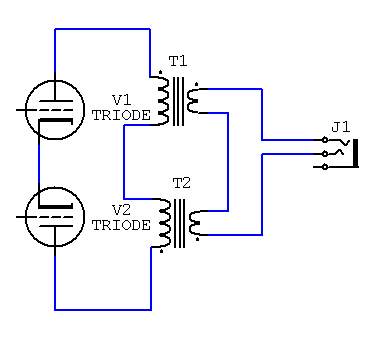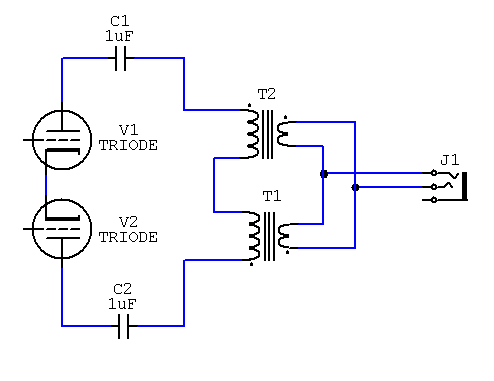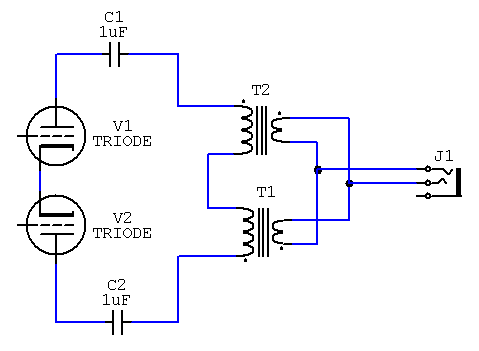rafafredd
Well-known member
So, I have two 20dBm 3:1 output transformers...
For higher signal handling and higher ratio, would it be possible to wire it like this:

Will both transformers work as a one 6:1 transformer? Any problems in doing this?
I know that I´ll have to add coupling caps because the trafos are not gapped and they are not working in real PP operation thus not canceling DC...
But it´s just a representation drawing, you know...
For higher signal handling and higher ratio, would it be possible to wire it like this:

Will both transformers work as a one 6:1 transformer? Any problems in doing this?
I know that I´ll have to add coupling caps because the trafos are not gapped and they are not working in real PP operation thus not canceling DC...
But it´s just a representation drawing, you know...




